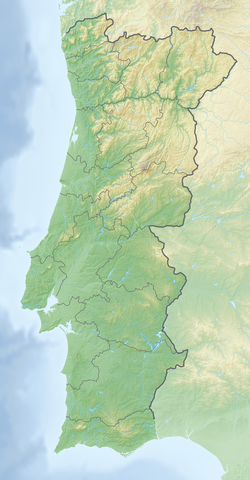| Papo Seco Formation | |
|---|---|
| Stratigraphic range: Early Barremian ~ | |
 The Papo Seco Formation outcrops towards the bottom of the Praia do Areia do Mastro site | |
| Type | Geological formation |
| Underlies | Assises à Orbitolines Formation |
| Overlies | Porto da Calada Formation |
| Lithology | |
| Primary | Mudstone, siltstone |
| Other | Sandstone |
| Location | |
| Coordinates | 38°24′N9°12′W / 38.4°N 9.2°W |
| Approximate paleocoordinates | 31°48′N1°18′E / 31.8°N 1.3°E |
| Region | Setubal |
| Country | Portugal |
| Extent | Lusitanian Basin |
The Papo Seco Formation is a geological formation in Portugal, whose strata date back to the Early Cretaceous. [1] Dinosaur fossils are among the fossils that have been recovered from the formation. [2] [3]





